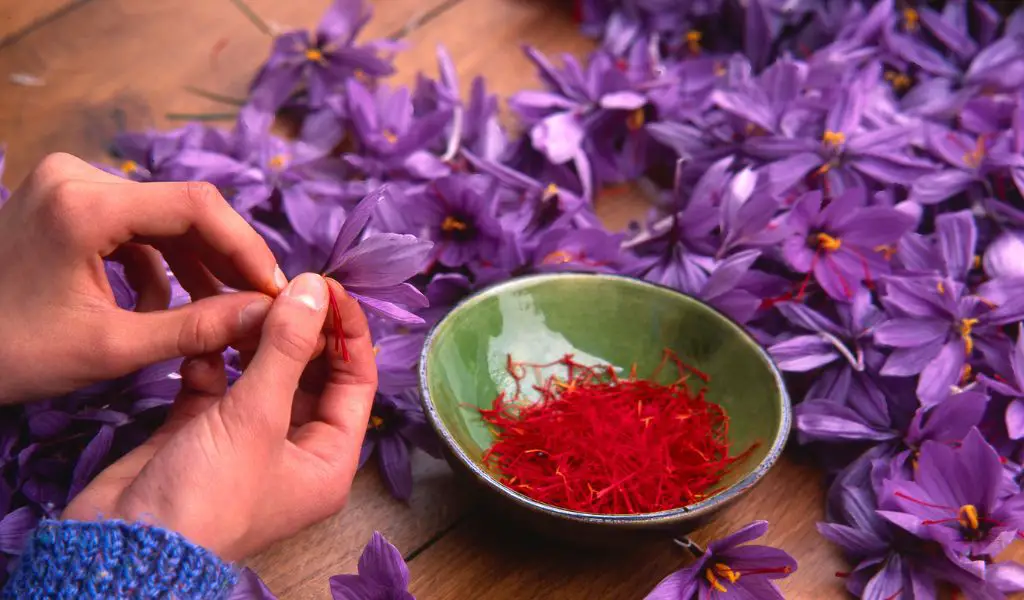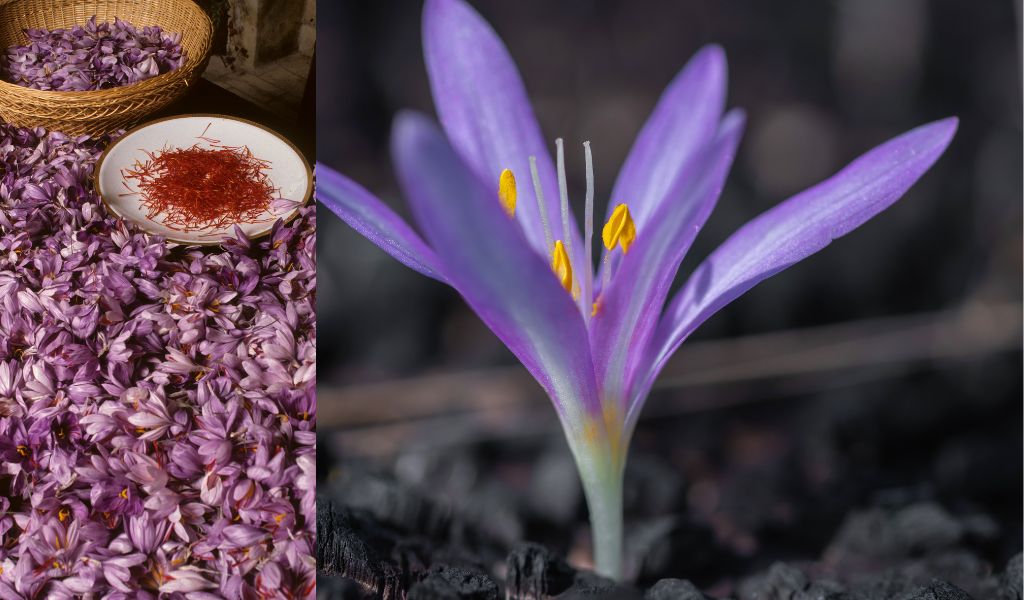Are you interested in growing the world’s most expensive spice? If so, you might be wondering, “Can you grow saffron?”
The answer is yes, and in this article, we will explore everything you need to know about growing saffron, from the ideal conditions to the care and maintenance required.
So let’s dive in and learn about this highly prized and delicate spice.
What is Saffron?
Saffron cultivation and its importance
Saffron is a spice derived from the dried stigmas of the Crocus sativus flower.
It is highly prized for its unique flavor, aroma, and vibrant color, which makes it an essential ingredient in various cuisines worldwide.
Saffron has been cultivated for thousands of years and is often referred to as “red gold” due to its high price.
Can You Grow Saffron?
Factors to consider
Yes, you can grow saffron. However, it’s crucial to consider several factors before embarking on saffron cultivation.
These factors include the climate, soil type, and availability of high-quality corms (the underground part of the plant that produces the saffron stigmas).

Ideal Conditions for Growing Saffron
Climate
Saffron grows best in regions with distinct seasons, particularly Mediterranean climates.
It requires a sunny location with well-draining soil and can tolerate cold temperatures, as long as the ground does not remain wet for extended periods.
Soil
Well-draining, sandy, or loamy soil with a pH between 6 and 8 is ideal for saffron growth.
Heavy clay soils should be amended with organic matter and sand to improve drainage.
Watering
Saffron requires moderate watering. Overwatering can lead to rot, so it’s essential to ensure the soil drains well and does not stay soggy.
Planting Saffron
Obtaining corms
To grow saffron, you’ll need to acquire corms, which are small, bulb-like structures that produce the saffron flowers.
Ensure you source high-quality, disease-free corms from a reputable supplier.
Planting process
Saffron is typically planted in late summer or early fall.
Dig a hole about 4 inches deep, place the corm inside with the pointed end facing up, and cover it with soil. Water well after planting.
Plant spacing
Space the corms about 4 to 6 inches apart to allow for adequate growth and air circulation.
Saffron Care and Maintenance
Fertilization
Saffron plants benefit from regular fertilization.
Use a balanced, slow-release fertilizer in the fall when planting and then again in the spring to encourage healthy growth and flower production.
Pests and diseases
Saffron is relatively resistant to pests and diseases. However, some potential issues include corm rot and fungal diseases due to excess moisture.
Ensure proper drainage and avoid overwatering to prevent these problems.
Harvesting
Harvest saffron stigmas in the morning, just after the flowers have opened.
Carefully remove the three red stigmas from each flower using tweezers or your fingers, and then dry them in a well-ventilated area away from direct sunlight.
Growing Saffron in Containers
Container selection
If you don’t have a suitable garden space, you can still grow saffron in containers.
Choose a container with drainage holes that is at least 6 inches deep and 12 inches in diameter.
Container care
Fill the container with well-draining potting mix and plant the corms as you would in the ground.
Place the container in a sunny spot and water it regularly but moderately, ensuring the soil does not become waterlogged.
The Economics of Saffron Farming
Costs and returns
Growing saffron can be a profitable venture due to its high market value.
However, keep in mind that it requires significant upfront costs for corms, land preparation, and labor.
The labor-intensive nature of saffron harvesting also adds to the overall costs.
Market demand
The global demand for saffron is high, and the market is continually growing.
Saffron is not only used in culinary applications but also in cosmetics, pharmaceuticals, and traditional medicine, ensuring a diverse market for this precious spice.
Conclusion and final thoughts 💭
Growing saffron is indeed possible, and with the right conditions, care, and patience, you can cultivate this highly valuable spice.
Whether you choose to grow saffron in your garden or in containers, remember to pay close attention to factors like climate, soil, and watering to ensure a successful harvest.
FAQs
How long does it take for saffron to grow? Saffron flowers typically bloom in the fall, about 6-8 weeks after planting the corms.
How much saffron can I expect to harvest from each plant? Each saffron flower produces only three stigmas, and it takes approximately 150 flowers to produce one gram of dried saffron.
Can I grow saffron indoors? While it’s possible to grow saffron indoors, it may not be as successful due to the lack of natural sunlight and the difficulty of providing ideal conditions for growth.
How do I store saffron after harvesting? Store dried saffron stigmas in an airtight container, away from light and heat. Properly stored saffron can maintain its quality for several years.
Is saffron difficult to grow? While saffron cultivation requires specific conditions and care, it is not overly difficult to grow. The main challenges lie in maintaining proper drainage and providing adequate sunlight.




